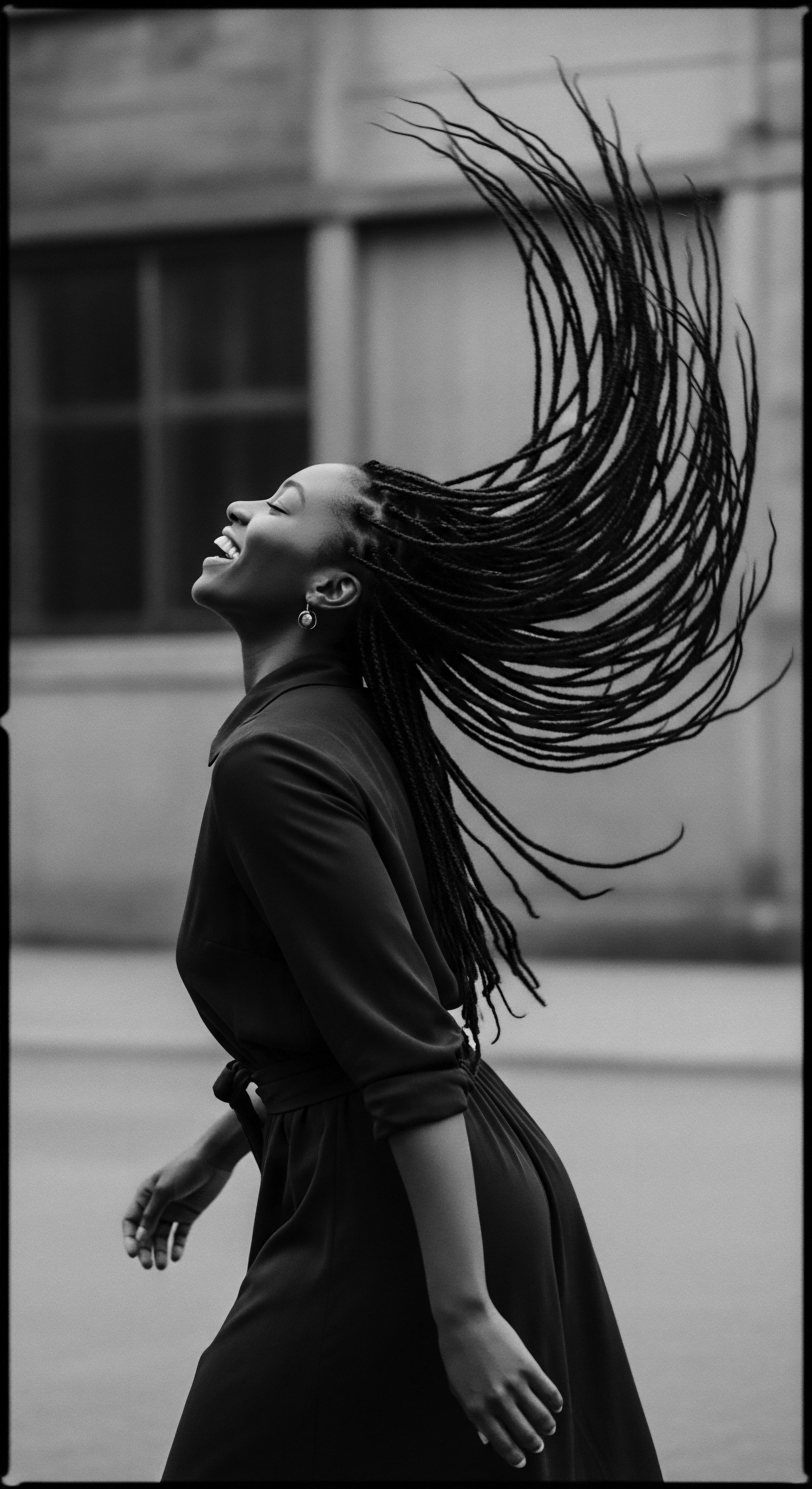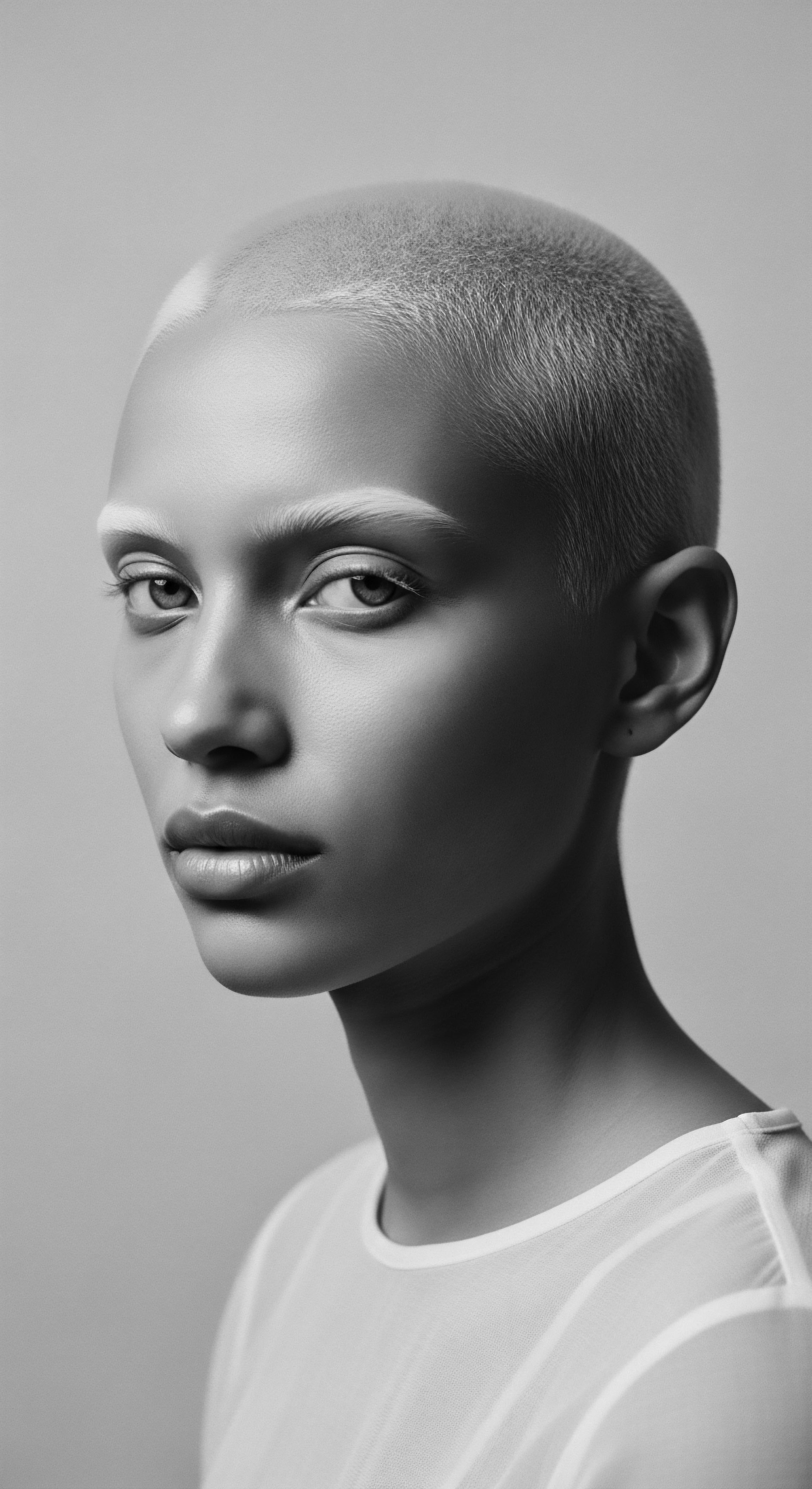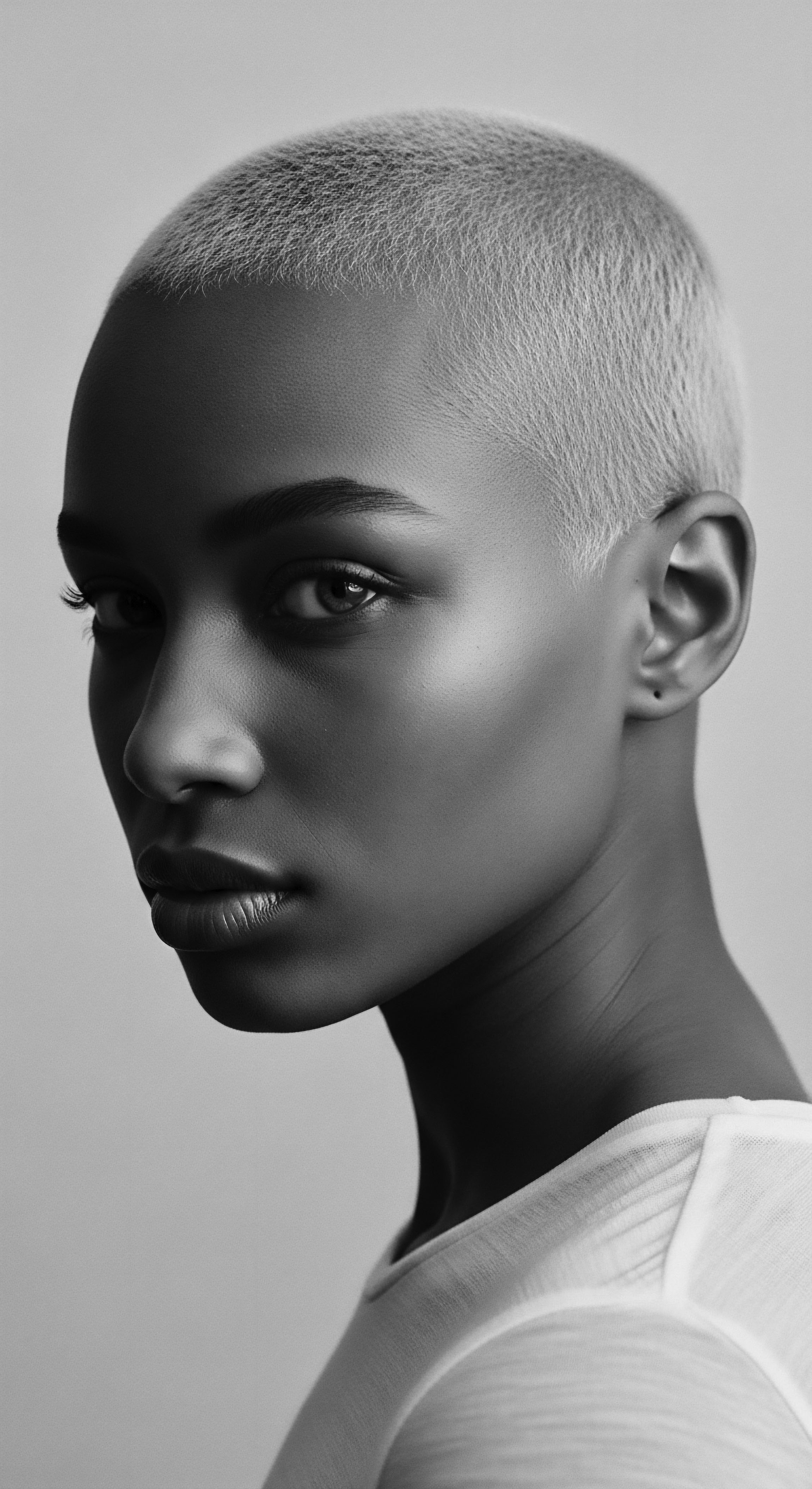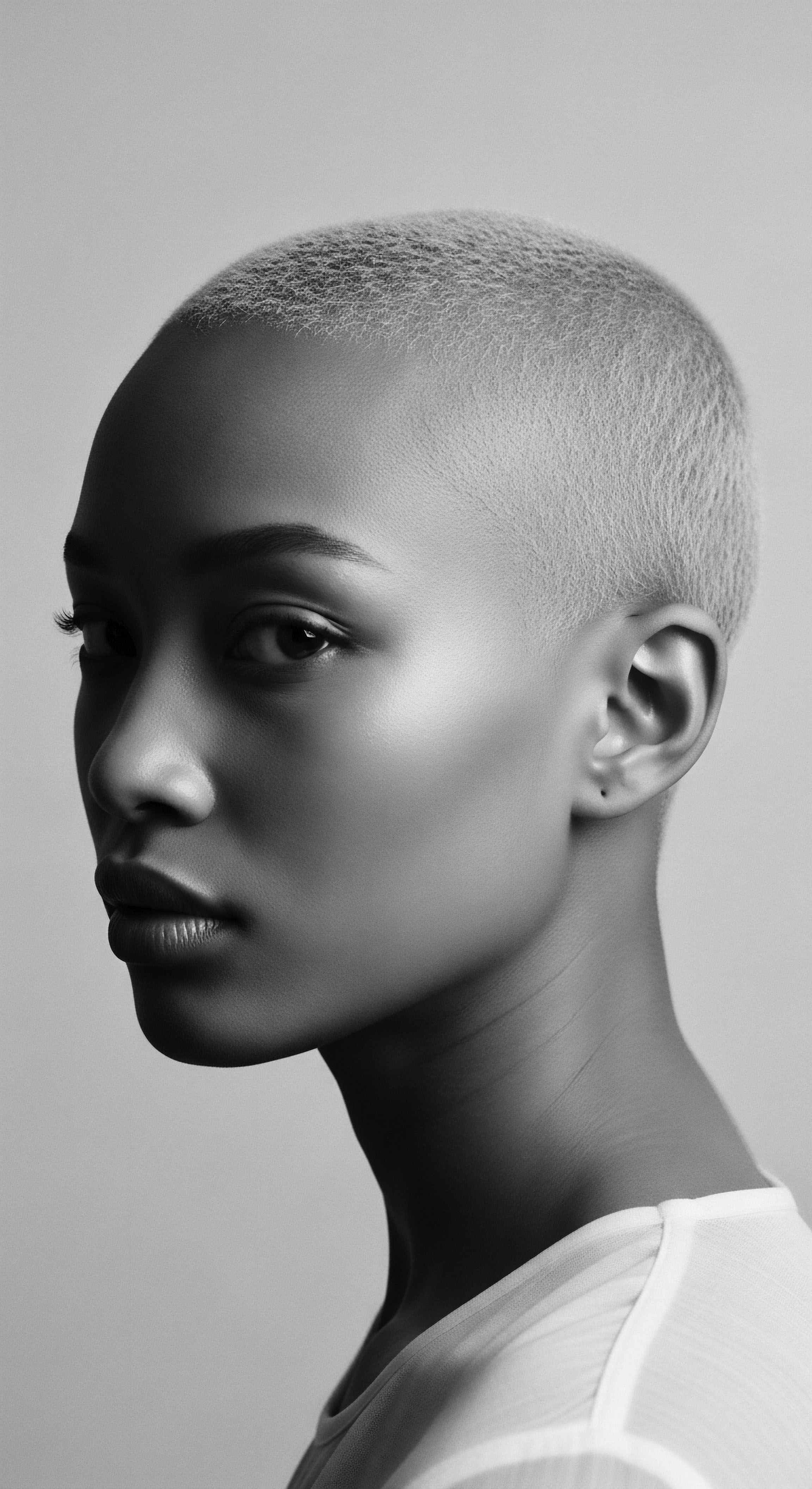
Roots
There exists a profound, unspoken conversation between the coiled strands of textured hair and the enduring wisdom of our ancestors. It is a dialogue whispered across generations, a resilient testament to survival, identity, and the deep connection to the Earth that sustained communities through millennia. For too long, the inherent strength and unique architecture of Black and mixed-race hair were misunderstood, even denigrated, by narratives detached from its elemental truth and its sacred past. Here, we peel back those layers, seeking to listen to the echoes from the source, discerning how ancient hands, guided by intimate knowledge of their surroundings, offered profound shelter to the crowning glory of their people.
The story of textured hair is not merely one of aesthetic preference; it represents a living archive, a repository of ingenious practices forged in lands where the sun beat fierce, where dust swirled, and where varied climates posed constant challenges. Consider, for a moment, the vast savannahs, the humid rainforests, the parched desert winds—each landscape a relentless sculptor of both human existence and the very biology of our hair. Ancestral wisdom recognized this interplay, developing sophisticated strategies that allowed hair not just to survive, but to flourish in the face of these environmental pressures. This profound understanding of environmental adaptation, born of necessity and passed through time, forms the very foundation of what we now recognize as protective hair practices.

Hair’s Elemental Architecture
To truly grasp how ancestral practices shielded textured hair, one must first look deeply into the strand itself. Unlike hair with smoother, more linear structures, the helical twists and turns of coily and curly hair mean its surface is exposed more readily to the air, making it naturally inclined towards moisture loss. Each curve on the hair shaft represents a potential point of fragility, a place where the outer cuticle layers might lift, allowing vital hydration to escape. This unique morphology, while imparting extraordinary volume and versatility, also presented distinct vulnerabilities to harsh sun, desiccating winds, and airborne particulate matter that could settle upon the scalp and strands.
Our forebears possessed an intuitive grasp of this biological reality, even without electron microscopes or chemical analyses. Their observations of nature, of how plants and animals adapted to their climes, informed their approach to hair care. The solutions they developed were not random acts of beautification; they comprised a sophisticated system designed to mitigate these intrinsic vulnerabilities. This foresight, rooted in living alongside the land, speaks to a deep, practical scientific understanding.

Traditional Classifications of Hair and Purpose
Across diverse African societies, hair was seldom viewed as a uniform entity. Indigenous communities often held their own complex classifications, not always based on precise curl patterns as modern systems might, but certainly on how hair behaved and what it represented. These traditional understandings of hair’s inherent qualities guided decisions about care and styling.
A style chosen for a journey, for example, would differ vastly from one worn for a ceremony, each choice intrinsically linked to its practical protective function against the elements. The language used within these communities, though perhaps not scientific in the modern sense, conveyed a rich, descriptive understanding of hair’s resilience and needs.
For instance, some communities might describe hair based on its resistance to drying, its ability to hold a shape, or its thickness, implicitly linking these characteristics to environmental interaction. This organic classification system ensured that practices and ingredients were applied with an understanding of individual hair types and the environmental conditions they would confront.
Ancestral hair practices, developed through generations of intimate observation, offer profound lessons in shielding textured hair from environmental stressors.

An Enduring Lexicon of Care
The words used to describe hair and its care in ancestral traditions speak volumes about the respect and knowledge held for these practices. Terms for particular oils, specific braiding techniques, or communal grooming rituals were not mere labels. They embodied generations of passed-down wisdom, practical application, and often, spiritual significance. Understanding this lexicon provides a window into the holistic worldview that underpinned their approach to well-being.
- Shea Butter ❉ Known in some West African languages as ‘nkuto’ or ‘karite’, this rich emollient has been used for centuries to seal moisture and protect hair from sun, wind, and dust.
- Ochred Hair ❉ As seen with the Himba, a paste of red ochre and butterfat, known as Otjize, provides a physical barrier against intense sun and insects, deeply coloring the hair.
- Protective Styles ❉ Terms for intricate braids, twists, and knots often conveyed their dual purpose ❉ cultural symbolism and functional shielding from environmental exposure.
The very terminology reveals a continuity of knowledge, where each ingredient and method carried a history of efficacy, understood not just through observation, but through its deep cultural heritage. This living language, spoken through gesture and application, reinforced the protective legacy.

Growth Cycles and Earth’s Rhythms
The natural cycles of hair growth, influenced by nutrition, overall health, and environmental exposure, were also observed by ancestral practitioners. While they did not have the exact scientific framework of anagen, catagen, and telogen phases, they recognized periods of growth, rest, and shedding. This intuitive understanding guided practices such as periods of rest for the hair through long-term protective styles, or the application of nourishing treatments aligned with seasonal changes or life stages. Hair care, in this context, became a rhythmic dance with the Earth’s own cycles, acknowledging that internal and external influences shaped the health of the strands.
For instance, practices might intensify during dry seasons to combat increased moisture loss, or incorporate elements to stimulate the scalp during periods perceived as conducive to growth. This deep ecological awareness ensured that interventions were harmonious, supporting hair’s natural vitality within its environmental context.

Ritual
The daily and ceremonial engagement with textured hair in ancestral societies transcended simple grooming. These were intentional acts, steeped in cultural meaning and executed with a deep understanding of environmental interplay. The ‘ritual’ of hair care, therefore, was a precise art, refined over generations, where techniques and tools merged with cultural narratives to transform styling into an act of protection against the elements, a living heritage.

Protective Styling Beyond Aesthetics
Consider the myriad of protective styles that grace the historical record and contemporary practice ❉ cornrows, various forms of braids, twists, and locs. These are not merely decorative. From the intricate patterns of ancient Nubia to the enduring styles seen today, protective styling served a dual purpose ❉ to convey identity and status, and to safeguard the hair from the harsh realities of daily life.
By tucking away fragile ends, these styles minimized exposure to sun, wind, dust, and friction, preserving moisture and preventing breakage. This functional aspect of styling was paramount, a practical shield against environmental degradation.
In many West African communities, for instance, braids often served as a critical means of managing hair during extensive travels or agricultural seasons, when exposure to the elements was unavoidable. The structural integrity of a tightly woven braid provided a physical barrier, keeping the delicate hair shaft insulated and less prone to tangling or environmental assault. This strategic styling was a direct response to climatic conditions, ensuring the health and longevity of the hair even in challenging circumstances.

How Did Hair Adornments Aid Protection?
Beyond the structural styles, ancestral communities often integrated natural adornments that played a role in environmental shielding. Think of beads, shells, and even certain plant fibers interwoven into hair. While beautiful, these additions could also contribute to the hair’s resilience. For instance, heavier beads might subtly weigh down hair, reducing wind-induced tangling.
Certain plant fibers, if applied, could offer additional layers of protection or even possess insect-repelling properties. This thoughtful incorporation speaks to a comprehensive approach where every element of hair adornment held multiple layers of meaning and function.
The use of clay or ochre-based pastes, such as the Otjize of the Himba people in Namibia, offers a vivid instance. This blend of red ochre powder, butterfat, and sometimes aromatic resin, is applied daily to both skin and hair. Beyond its striking aesthetic and symbolic value—representing the earth, life, and the connection to ancestors—this paste provides a tangible protective coating. It acts as a natural sunscreen, a barrier against dry desert winds, and a repellent for insects.
The Himba’s tradition of using Otjize thus offers a powerful historical example of ancestral practice specifically designed to shield hair from severe environmental stressors. (Mumbuu, 2023)
| Ancestral Practice Applying plant oils, butters, and resins |
| Environmental Stressor Addressed Dryness, UV radiation, wind, dust |
| Underlying Principle Sealing moisture, creating a physical barrier, nourishing |
| Modern Correlation Leave-in conditioners, UV protection sprays, hair oils, hair masks |
| Ancestral Practice Intricate braiding and protective styles |
| Environmental Stressor Addressed Physical damage, friction, excessive manipulation, sun exposure |
| Underlying Principle Tucking away ends, reducing surface area exposure |
| Modern Correlation Braids, twists, buns, wigs, scarves for hair protection |
| Ancestral Practice Head wraps and coverings |
| Environmental Stressor Addressed Sun, dust, cold, rain |
| Underlying Principle Physical barrier, temperature regulation, moisture retention |
| Modern Correlation Hats, scarves, bonnets, satin-lined headwraps |
| Ancestral Practice These diverse methods, honed over generations, demonstrate a continuous legacy of care that safeguarded hair in varying climates. |

Tools of the Past, Wisdom for the Present
The tools employed in ancestral hair care were as thoughtfully crafted as the practices themselves. Simple combs carved from wood or bone, pins made of natural materials, and communal spaces for grooming all played a role. These tools were often designed with the delicate nature of textured hair in mind, minimizing pulling and breakage.
The communal aspect of hair styling, where elders shared techniques and stories, further solidified the protective intent, ensuring knowledge was transferred with care and respect. The physical act of styling became a ceremony, a moment for community bonding and the intergenerational transfer of wisdom regarding hair health and its preservation against the elements.
The very act of communal grooming meant that hair was handled with patience and attention. Unlike the hurried, individual routines common in contemporary life, these shared moments allowed for thorough detangling, careful application of natural emollients, and precise execution of styles, all contributing to the hair’s resilience. The meticulous nature of these rituals meant that hair received comprehensive care, fortifying it against external aggressors. This holistic perspective, prioritizing gentle handling and sustained attention, laid the groundwork for robust hair health.

Relay
The enduring vitality of ancestral hair practices, especially those that safeguard textured hair from environmental pressures, speaks to a profound intelligence passed through time. It is a relay of wisdom, from the hands that first mixed ochre and butterfat, to the modern scientist who validates the protective properties of shea. This journey involves not simply the repetition of techniques, but a continuous reinterpretation and deep understanding of why these methods persisted, their effectiveness rooted in both empirical observation and a nuanced connection to heritage.

Validating Ancestral Efficacy through Modern Science
Contemporary scientific inquiry often mirrors and validates the long-held wisdom of ancestral hair practices. For instance, the traditional application of plant-based oils and butters—like shea butter (Vitellaria paradoxa) across West Africa—is now understood through the lens of lipid chemistry. Shea butter, rich in fatty acids and vitamins A and E, forms a physical barrier on the hair shaft, reducing transepidermal water loss and shielding against UV radiation and physical abrasion from wind and dust. This scientific explanation reinforces what countless generations already knew ❉ these substances provided tangible protection.
The presence of UV-absorbing compounds in some plant extracts, for example, directly substantiates their historical use as sunscreens for both skin and hair. (Islam, 2017)
The structure of coily hair, while beautiful, naturally presents more surface area for moisture evaporation. Ancestral practices instinctively countered this. The Himba people’s widespread use of Otjize, a blend of red ochre and butterfat, serves as a compelling case in point. This paste not only provides a distinct aesthetic and cultural marker but also functions as a tangible barrier against the extreme desert sun and dry winds of Namibia.
Research in ethnobotany often reveals that indigenous communities, through centuries of trial and observation, developed highly effective uses for local botanicals that modern science can now meticulously analyze and explain. (Cox, Balick, & Penna, n.d.)

How Do Traditional Hair Formulations Compare to Modern Protective Agents?
Traditional hair formulations, often simple yet potent concoctions of oils, herbs, and clays, stood as the original protective agents. These contrast with the complex synthetic polymers and silicones found in contemporary products. Yet, their underlying mechanisms frequently align ❉ to coat the hair, seal moisture, and reduce friction or environmental exposure. Ancient Egyptians, for example, used castor oil and almond oil for their moisturizing and protective properties against the desert climate, sometimes integrating beeswax for styling and creating a physical barrier.
The ingenious use of natural waxes, such as beeswax, provided not just hold but also a protective layer against environmental harm, predating modern advancements in polymers for styling. This historical application reflects an innate understanding of how to maintain hair’s integrity in challenging climates. The continuity of purpose, despite the evolution of ingredients, speaks volumes about the timeless need for hair protection.

Community and the Cultivation of Resilience
The communal aspect of hair care in many ancestral societies fostered resilience—not only in the physical strands but in the cultural fabric itself. Hair braiding sessions, often lasting for hours, were significant social gatherings. Here, stories were shared, wisdom passed down, and intergenerational bonds strengthened.
This collective experience meant that knowledge about effective protective practices was not lost; it was actively transmitted and reinforced. The sustained practice of these communal rituals created a living library of hair heritage, each braid and each oiling a reaffirmation of identity and resistance against external pressures, including environmental ones.
This social aspect meant that hair care was never a solitary burden. It was a shared responsibility, a community endeavor that ensured the well-being of each individual’s crown. Such collaborative care fostered a holistic sense of health, connecting personal grooming to collective identity and environmental adaptation.
The enduring power of ancestral hair practices lies in their validation by modern science and their profound role in community building.

Navigating Climate and Hair Health
The interplay between climate and textured hair health has always been a central consideration for ancestral communities. In arid regions, the focus intensified on rich emollients and tightly bound styles to minimize moisture evaporation. In more humid environments, practices might have aimed at preventing excessive swelling or managing natural definition without encouraging frizz. This adaptability, a hallmark of ancestral wisdom, demonstrates a sophisticated understanding of environmental dynamics and their direct influence on hair.
For instance, some traditions might emphasize heavier oils during dry seasons, while lighter infusions could be favored in humid spells. This seasonal adjustment, rooted in careful observation of nature’s rhythms, ensured hair remained balanced and protected throughout the year. It highlights a deep ecological awareness that extended to every aspect of daily life, including personal grooming.

Reflection
As we gaze upon the intricate patterns of a cornrow, the soft sheen of an oiled twist, or the bold statement of an ochred coil, we are not simply observing a style. We are witnessing a profound meditation on heritage, a living, breathing archive of human ingenuity and cultural endurance. The ancestral practices that shielded textured hair from environmental stressors represent more than historical footnotes; they are enduring echoes of wisdom, a testament to the deep reciprocity between people and their environment. Each strand, in its unique undulation, carries the memory of hands that understood the desert sun, the biting wind, the clinging dust, and the very composition of the earth’s bounty.
This understanding, born of necessity and passed through generations, tells a story of survival, of identity, and of a beauty that defied the elements, not by conquering them, but by moving in harmony with their forces. In a world yearning for connection to its roots, the wisdom held within textured hair traditions offers not just lessons for care, but a pathway to reclaiming a legacy of resilience, dignity, and a profound respect for the Earth that nurtures us all.

References
- Cox, P. A. Balick, M. J. & Penna, V. (n.d.). Ethnobotany and Beauty Care. Nu Skin.
- Islam, T. (2017). Shea Butter ❉ A Natural UV Protector. The Journal of Cosmetology & Trichology, 3(1), 1-2.
- Mumbuu, E. (2023). Himba tribe’s unique beauty secrets. The Namibian.
